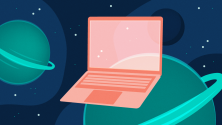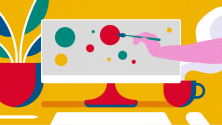Linux 的吉祥物是一只名叫 Tux 的企鹅,因此我们认为庆祝企鹅意识日以保护企鹅栖息地并多谈论一些关于 Linux 的内容是很合适的。
关于企鹅的一些有趣的事实:这些毛茸茸的生物不会飞,但却是鸟类家族的一员。有些很大,比如帝企鹅,有些很小,比如在新西兰发现的那些。而且,众所周知,Gentoo 企鹅的游泳速度高达每小时 21 英里!
现在,来说说 Linux。我请我们的作家社区描述他们了解 Linux 的那一刻,或者他们在自己的机器上运行 Linux 的那一刻。以下是他们分享的内容。
Simon Pincus,Opengear 工程副总裁
在我看来,2008 年是市场接受 Linux 的一个重要转折点。作为一名开发经理,我的团队自然而然地多年来一直在使用各种发行版作为开发和测试环境。但从销售和营销的角度来看,我们在说服客户在生产中使用 Linux 和我们的应用程序方面几乎没有取得任何进展。这种情况变化得非常快,就我个人而言,与一位客户的一次会议让我意识到风向已经转变。
我当时正在与欧洲一家大型电信公司的 CTO 会面。我正在介绍一个应用程序的技术架构,并开始介绍推荐的环境。像往常一样,我首先推荐了 Linux,并立即转而为该平台在任务关键型应用程序中的稳定性、安全性、可靠性进行辩护(这种介绍通常只会换来茫然的目光)。
CTO 打断我的话,说道:“无需说服我任何这些:我们从现在开始将大量使用 Linux。只要告诉我我们多久能拿到它。”那一刻,我知道战斗结束了!
Chris Hermansen,社区版主,社区参与顾问
2005 年秋天,我的工作台上仍然有一台 Sun 工作站,但我的家人正在为一年的外出做准备,而且由于我将继续工作,我决定买一台又大又快的笔记本电脑来满足我的计算需求。事实证明,这是一台非常不错的东芝笔记本电脑,运行 Windows XP,但即使安装了 MinGW,几个月后我发现我并没有获得我所需的那种高效的开发环境。
我以前尝试过 Linux,但我总是回到我值得信赖的 Sun——主要是因为 90 年代的 PC 硬件不太好。但这一次,我不会再有 Sun 这个选项了,所以我下载了一个名为 Ubuntu 的较新的发行版,并将其安装在我的笔记本电脑上。在那台不错的硬件上,令我惊讶的是,我不仅发现 Linux 真的很好,而且我还发现整体体验比我的 Sun 更好。它提供了更好的 GNOME 体验,它有更好、更新的软件包选择,而且通常速度更快。所以,我不仅替换了 Windows,而且我还放弃了 Solaris。
当我们一年后回来时,我为我的办公室订购了一台新的戴尔台式机,并在上面安装了 Linux。我从未回头。
Jay LaCroix,IT 总监
我于 2002 年在一所社区大学开始接触 Linux,该大学当时正在开设一个 Linux 试点课程。我非常着迷,以至于在第一天上课之前就完全读完了教科书。每个学生都获得自己的硬盘驱动器来安装 Linux,我们将安装视为自己的,并在整个课程中维护/改进它。
后来,我被要求激活我的 Windows XP 副本,因为我重新安装了太多次,这让我感到冒犯。那是我的电脑,我基本上被锁定在机器之外,直到我打电话给微软并验证了我的安装才能登录。考虑到我从课程中学到的关于 Linux 的新知识,我决定安装 Red Hat Linux 并学习如何将其用作我的日常操作系统。我喜欢在我的机器上拥有完全的自由,而无需处理许可或激活问题。从那以后,我先是转向 Fedora,然后是 Debian,现在是 Ubuntu(以及介于两者之间的几个)。
Maxim Burgerhout,高级解决方案架构师兼兼职布道者
我在世纪之交之前开始接触 Linux,当时我在法学院学习,并在当地一家电脑商店兼职。我们实际上出售盒装 Red Hat Linux,这是我的第一个发行版。不久之后,我转到大学兼职担任助教。那大约是 1999 年或 2000 年,我想。我从那时起开始在桌面上全职使用 Linux,在人类已知的每一种可能的发行版之间切换,只是为了尽可能多地了解它。
我作为助教的工作之一是向其他法学院学生解释互联网是什么(记住,这几乎是 20 年前!)。在我的课程中,我主要重复了我从下载、安装、配置和运行 Linux 中学到的知识。Linux 远没有今天那么完善,但它是一种让你亲自动手并了解计算机真正工作原理的好方法。现在仍然如此!
虽然 Linux 自 1994 年左右就进入了我的视野,但由于一些原因,我从未尝试过它。这一切都在 1999 年发生了变化,当时我运行 Windows 98 的电脑崩溃了,带走了大量的工作。几天后,我在一家 Staples 办公用品商店看到了一份盒装的 Caldera OpenLinux 在打折出售。我决定花 20 美元试一试。
大约在那个时候,我的妻子买了一台新的台式电脑,所以我拿了她的旧电脑,将安装 CD 放入驱动器,在 20 或 30 分钟内,我就有了一台可以工作的桌面电脑。从那时起,我就没有回头。不再担心许可证或昂贵的软件。我可以专注于完成工作。多年来,我使用 Linux 升级和抢救了许多台式机和笔记本电脑(包括我自己的和朋友的)。
Bertrand Delacretaz,Adobe 首席科学家,Apache 软件基金会成员和董事
我从 1985 年开始使用 Unix。(我感觉 #oldfart 标签即将到来。)
我的第一个认真的 Linux 项目是在 2004 年,当时我们为一个在瑞士巡回展览多年的展览创建了一个基于 Linux 的视频播放器和多媒体信息亭。这套播放器和信息亭的用户手册是为了解释如何在早上打开电源,并在晚上关闭电源而编写的。操作员不应该对 Linux 或计算机有任何了解,而且不得不出差去修理这些东西会扼杀我们紧张的预算。
在当时,创建一个如此强大、开箱即用的系统,配备用于媒体的大容量磁盘(因此不是真正的嵌入式系统)是一个严峻的挑战。但是,它运行得非常出色,在多年的展览巡回演出中几乎没有服务呼叫。在当时获得高质量的数字视频播放也具有挑战性,但 Linux 的构建块方法意味着我们可以把一切都做好,并创建一个高度定制化的系统,做得非常出色。
那时我意识到 Linux 将会长期存在。
Steve Morris,Ambrose 大学信息技术总监
我对 Linux 的发现发生在 90 年代初期。我有一个本地 ISP 的 shell 帐户,不得不研究 Unix 以弄清楚如何使用它。通过搜索引擎,我了解了更多关于 Linux 的信息,特别是 Slackware。我的第一次安装是通过软盘或 CD-ROM,但我确实清楚而深情地记得大声说出:“太好了!现在怎么办?”的那一刻
Thomas Hamilton,Red Hat 技术支持工程师
我于 2003 年上了大学,这意味着我需要一台新的笔记本电脑。它预装了 Windows XP。那是早期,有些笔记本电脑可以从 USB 启动,有些则不能。
在接下来的几年里,我的 CD/DVD 驱动器坏了,所以我只是买了一个外置驱动器,以备不时之需。没什么大不了的。然而,最终,Windows 崩溃了。没有光驱可以启动,而且 USB 在这台笔记本电脑上不是一个可启动的选项。我尝试取出硬盘驱动器,将其安装在另一台电脑上,从那里在上面安装 XP,然后再放回笔记本电脑。对于任何摆弄过 Windows 的人来说,毫不奇怪,这并没有奏效。
我听说过 Linux,并且在我的计算机科学课程中(Red Hat Linux 的一个企业预发布版本)短暂使用过它,并且碰巧偶然发现了一些我可以下载(免费、合法)并试用的 live 发行版。如果我没记错的话,这些是 Knoppix 和 Puppy。这些都很酷,但它们不是完整安装,仍然无法让我使用我的笔记本电脑。突破来自于 gOS,Ubuntu 8.04 的一个变体。它很漂亮,运行良好,而且 live 镜像也让我可以安装它。还记得 Windows 不能安装在一台电脑上,然后移动到另一台电脑上吗?好吧,Linux 可以!
我能够取出硬盘驱动器,将其放入另一台电脑,安装 gOS,放回我的笔记本电脑,它就工作了。在接下来的几年里,我仍然在其他几台电脑上与不同版本的 Windows 双启动各种 Linux 发行版,但由于 gOS,我省下了几百美元,否则我作为一个身无分文的大学生,本来不需要花钱买新电脑。我知道还有其他(更好)的 Windows 替代品,而且我已经有将近 8 年没有使用 Windows 了。它变得越来越好。
Jim Hall,FreeDOS 的创建者
我当时是一名大学生,经常使用校园里的 Unix 计算机实验室来运行物理实验室的数据分析程序。我在家用电脑上使用 DOS,但使用那些大型 Unix 系统让我感到很惬意,我想要更多。我开始浏览讨论组,有人提到了一个名为“Linux”的新事物。它是一个类 Unix 操作系统,但它可以在 PC 上运行。我可以在我的 '386 电脑上运行它。
我立即被一个免费的类 Unix 系统所吸引,我可以在家运行它,而无需一直拨号连接到校园计算机网络。
我从一堆软盘中安装了 SoftLanding Systems Linux 1.03!我甚至不认为当时有 CDROM 选项。SLS 1.03 配备了 Linux 内核 0.99 alpha 补丁级别 11,需要惊人的 2MB 内存,如果你想编译程序,则需要 4MB,而运行 X Windows 则需要 8MB。它运行良好!第一次启动 Linux 后,我惊喜地发现了一些熟悉的工具:awk 和 sed 用于操作文件,less 和 cat 用于检查文件,以及 GNU Emacs 用于编辑。对于更高级的工作,我有 gnuplot 来显示数据,gcc 来编写我自己的 C 语言实用程序,以及 f2c 来编写自定义的 FORTRAN 数据分析工具。
我于 1994 年毕业,获得物理学学士学位,但使用 Linux 开始了我的 Unix 系统管理员职业生涯。我从未回头。
Peter Czanik,Syslog-ng 布道者
我第一次接触 Linux 是在 1994 年我进入大学的时候。我去了学院 IT 部门,要求提供一个电子邮件地址,当时甚至老师都没有自动收到电子邮件地址。当我拿到电子邮件地址后,我还被邀请加入 IT 部门的学生志愿者小组。起初,我获得了对 FreeBSD 服务器的用户访问权限,但很快我就得到了在一台备用机器上安装 Linux 的任务。那是来自许多软盘的 Slackware,安装在一台配备 4MB 内存的 i386 机器上。
很快,我也在我的家用机器上安装并运行了 Linux。当时,它只是我的辅助操作系统,我仍然使用 Windows 作为我的桌面系统。我尝试了一些发行版,在家和我的大学服务器上都安装了它们:Red Hat Linux、Debian,然后是 Jurix,你很可能从未听说过。
Jurix 是一个人的表演,一个滚动发行版,非常注重安全性。我确实需要安全性:大学的外国学生不断攻击我们的服务器,但由于他们是付费学生,他们无法受到惩罚。很快,Jurix 成为 S.u.S.E Linux 的基础,从那时起,我一直使用它作为我的主要桌面操作系统,经历了它的名称从 SuSE、到 SUSE,再到现在的 openSUSE 的变化。
Rachel Kelly,云和 FOSS 爱好者
回顾过去,我现在与 Linux 的关系显而易见。我的父亲是家用电脑的早期采用者,我的两个兄弟一生都是程序员。我很幸运,Linux 一直都在我身边。然而,直到 2010 年,当我开始在 Free Geek 的 Build 项目中做志愿者时,我才有了有限的直接接触。在 Build 项目中,我是众多志愿者之一,被教导为在回收中心满足小时要求的其他志愿者以及 Free Geek 的店面构建 Linux 电脑。要从一个级别升到另一个级别,你需要支持,教新来者你所学到的东西。这种通过赋权进行指导的模式是我希望永远保持的。而且,了解 Ubuntu 10.04 是一份礼物,即使只有一点点命令行。
几年后,当我作为成年人重返大学时,我发现在我的 Python 入门课程中使用了这些技能。我班上的一位女士告诉我 PyLadies,这是一个面向女性 Python 程序员的国际聚会。在那里,我学习了足够的 bash 来舒适地使用命令行,然后学习了 Python,以便开发几个项目,为完成学位后找到我的第一份工作服务。这是一次实习,让我认真了解了现代技术堆栈的许多层面。
最后,在工作中使用 Mac 四年后,我已经为我的工作和个人项目完全切换到 Linux,特别是 Kubuntu(尽管我很喜欢 Unity、Mint、Fedora,甚至尝试过 Kali)。我喜欢它的可访问性、软件包可用性和出色的桌面环境。Linux 社区的自由伦理,以及那些努力使这里成为一个受欢迎的地方的人们,对我以及我们所有人来说都是宝贵的。我只是希望能够回报这份恩情。
开源社区向 PyLadies PDX 和 SeaGL 致敬!
Spencer Hunley,签约支持专家
我的 Linux 之旅始于我上大学的时候,当时我仍然在努力维护一台旧笔记本电脑上的 Windows XP 系统。在我的一个基础技术课程中,教授有一天为我们启动了 Red Hat Linux,我立刻产生了兴趣。在那之前,我从未听说过任何其他操作系统,无论是免费/开源的还是其他的,不是预装在新电脑上的。下课后我拜访了他的办公室,他花时间向我展示了 Ubuntu,他甚至在我的笔记本电脑上 live 运行了它。我简直不敢相信如此重要的东西竟然没有标价。
不久之后,我双启动了我的系统,但主要在 Ubuntu 中运行;它感觉焕然一新,比我以前拥有更多的控制权。随着我发现的越来越多,尝试了其他发行版,摆弄了各个部分(有时从破坏东西并不得不修复它们中学习),我完全转向了 Linux。在本地,我为那些好奇、希望刷新旧硬件或只是想要一个不妨碍他们并适应他们而不是相反的操作系统的人举办了一些非正式的 Linux 研讨会。没有 Linux,我就不会有今天的成就。
在评论中与我们分享您的 Linux 故事。


















22 条评论